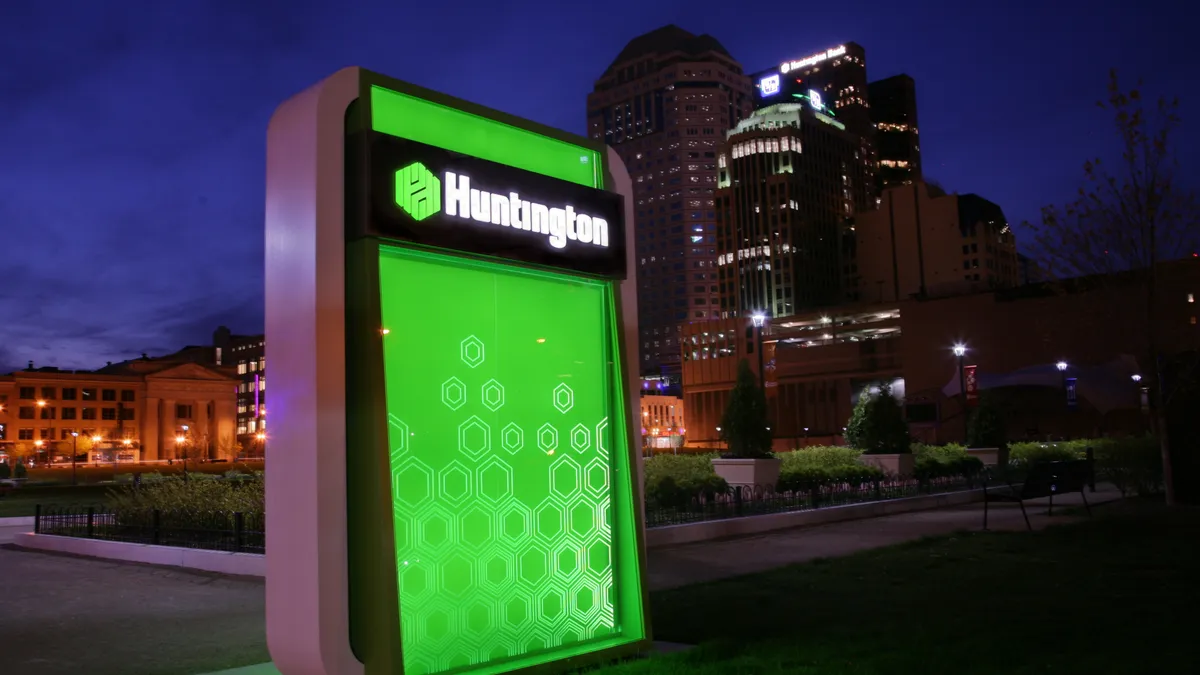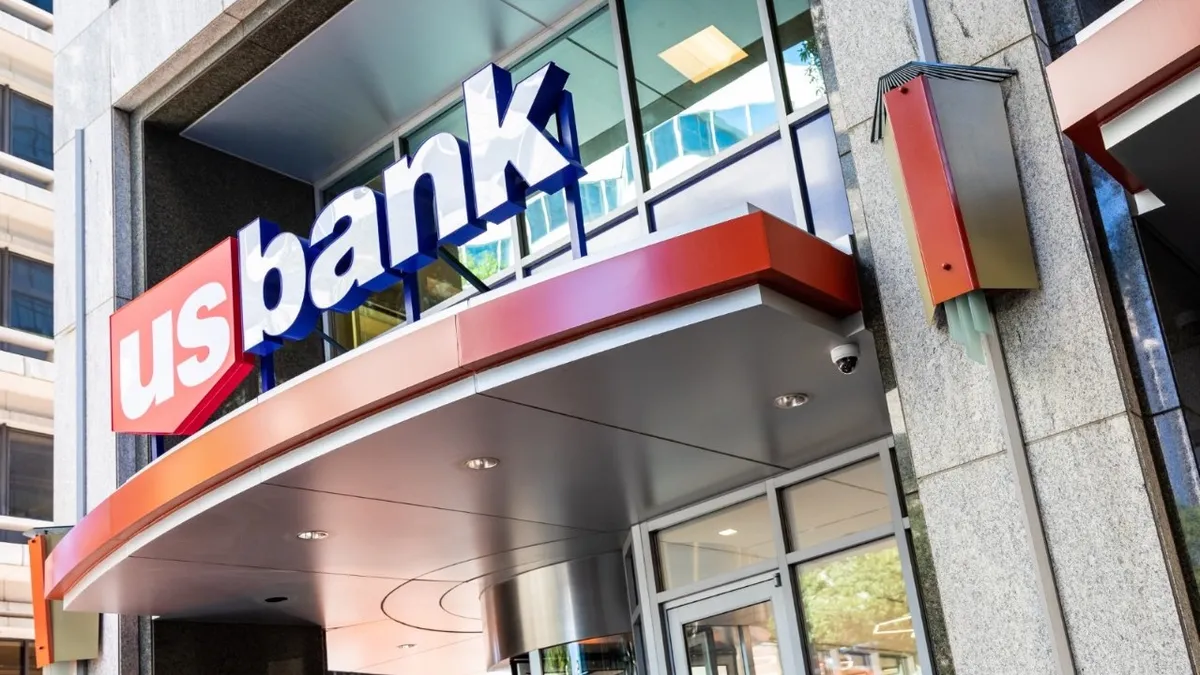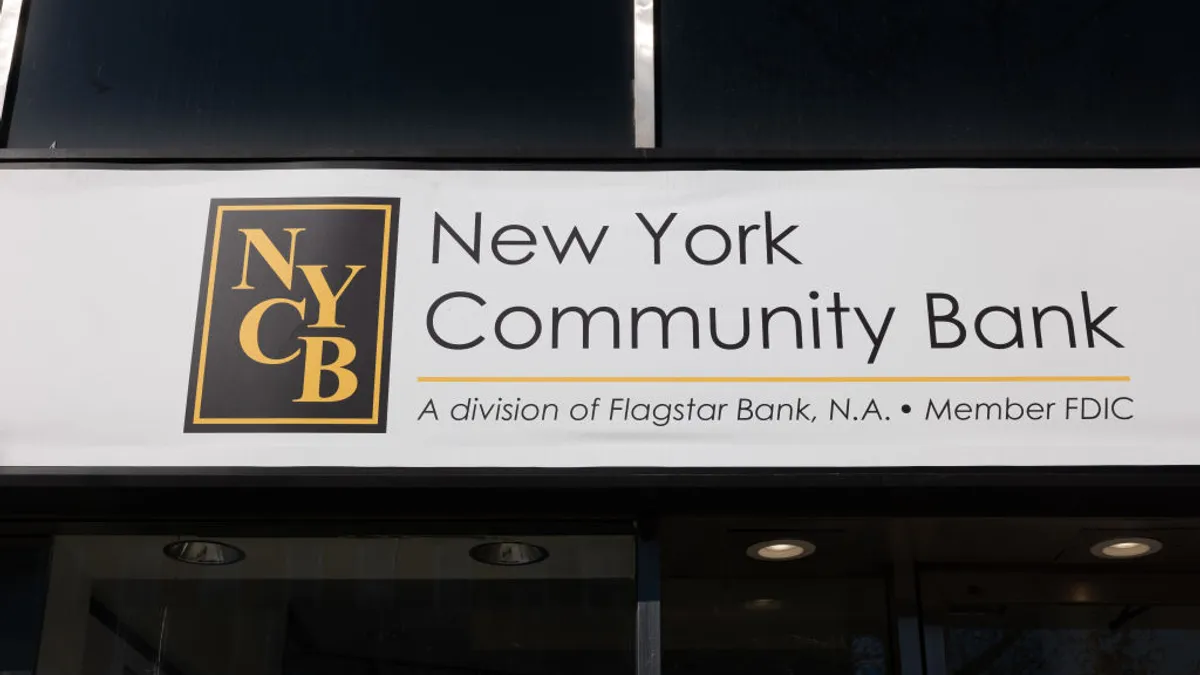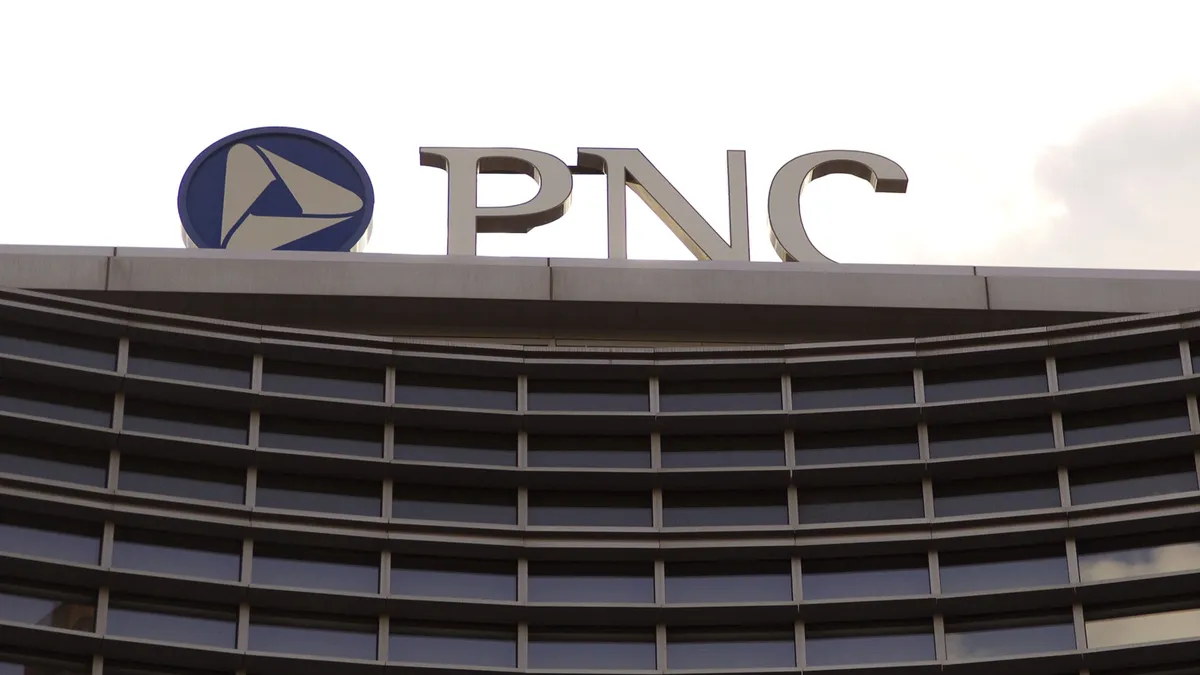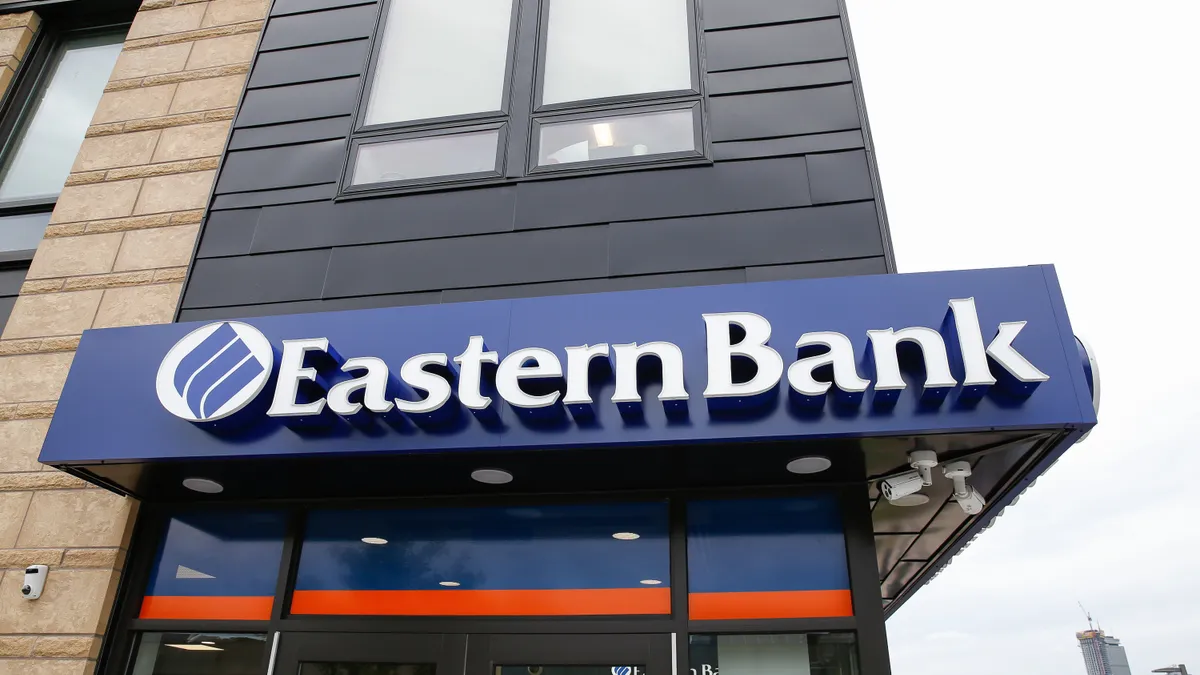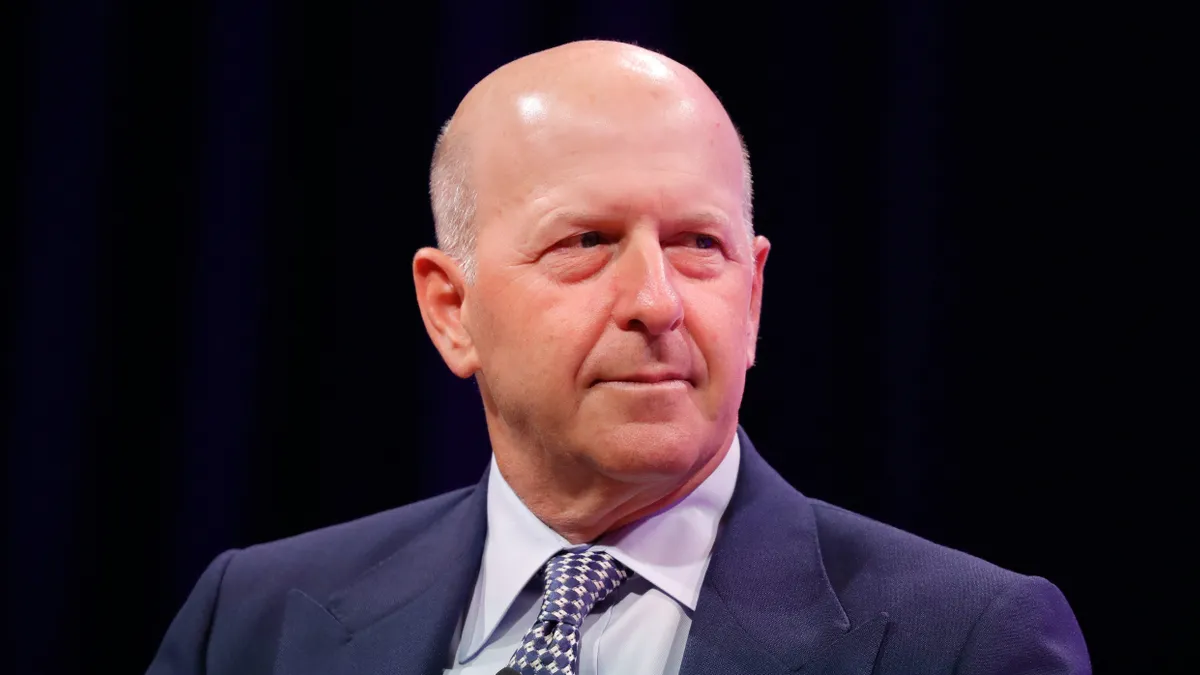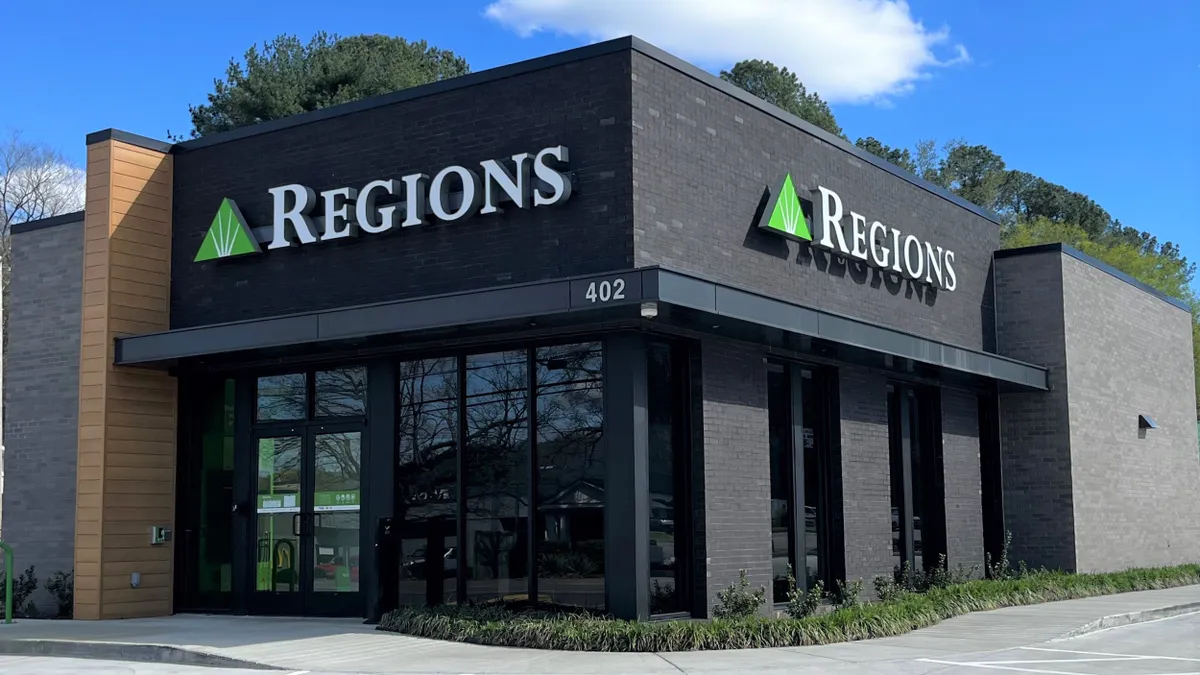Huntington Bank is on track to complete its Carolinas expansion in three years rather than the five identified initially, its CFO said.
The Columbus, Ohio-based regional said last September it was expanding in North and South Carolina, planning to open 55 branches in five years across six metro areas: Charlotte, Raleigh and Winston-Salem in North Carolina, and Charleston, Columbia and Greenville in South Carolina.
Huntington CFO Zach Wasserman said Thursday the bank has 37 of those 55 branches under letter of intent for real estate development, putting it “well ahead of schedule.”

The lender initially announced commercial expansions into North and South Carolina and Texas in late 2023 and early 2024. The bank, which has almost 970 branches in 13 states, has commercial customers in every U.S. state, but “what we weren’t doing was servicing the local middle market,” Wasserman said in an interview.
Expansions in the Carolinas and Texas were focused on building teams to cater to middle-market companies, offering deposit taking and lending, but also payments, capital markets and treasury management services. That approach is a relatively low-cost way to launch and build the brand in a new market, and the bank achieved profitability in those markets in less than a year, Wasserman said.
What it’s now pursuing in the Carolinas is what it considers a second phase: building out a physical branch infrastructure, lining up the organizational resources to offer its full consumer product set, and putting big marketing dollars behind it all.
“Building out the entirety of the Huntington banking franchise is a more significant investment,” including “hundreds of millions of dollars” in marketing, hiring and added capabilities, he said.
Wasserman declined to provide a more specific dollar figure for the Carolinas and Texas expansions. He said it’s “quite significant,” although absorbable within the bank’s overall expenses and capital guidance. Huntington has said non-interest expenses are expected to grow 3.5% to 4.5% this year, from about $4.5 billion in 2024.
The bank said in September that it expects to add about 350 employees across business lines through the Carolinas expansion. Wasserman said the bank is on the path of hiring “dozens of people” and expects Huntington will take on “hundreds more colleagues.” Huntington currently has about 20,100 employees.
The bank spends a good deal of time considering growth markets that hold promise, both within its existing footprint and adjacent territories, Wasserman said. It’s almost a “postal code by postal code-level analysis” that examines migration trends and where economic growth and business formation are occurring, he said.
The Southeast, Southwest and the Mountain West – including Denver, where the bank has also enhanced its presence – have appeared the most promising in terms of opportunity for Huntington. And despite any recent concerns about the economic impact of tariffs or lingering inflation, the long-term trends driving growth in those regions “aren’t going to stop,” Wasserman said.
Of course, there’s no shortage of competitors angling to take share in those regions, from big banks like JPMorgan Chase, Bank of America, U.S. Bank and PNC, to regional rivals such as Fifth Third. These regions aren’t underbanked, Wasserman acknowledged.
Huntington aims to stand out by bringing the capabilities of a top-20 bank, while delivering locally, he said.
“That is not always the way that banks go to market,” Wasserman said.
It’s rare for a regional bank of Huntington’s size to have the consumer franchise that it does, he said, adding that the bank is squarely focused on service, products, transparency and digital capabilities.
Huntington has high hopes for the Carolinas expansion: Wasserman declined to provide a breakdown of the bank’s business by region, but said executives expect that by 2030, North and South Carolina will rank in the lender’s top four regions, rivaling central Ohio, northern Ohio and Michigan in terms of scale.
Sun Belt expansion is helping fuel the bank’s broader growth ambitions. When Wasserman joined in 2019, the lender had about $110 billion in assets and about $4 billion in revenue. Today, Huntington has $210 billion in assets and is approaching $8 billion in annual revenue.
The regional lender doesn’t set targets as far as overall size, Wasserman said. But by the end of the decade, “I wouldn’t be surprised to see that same level of growth,” he said, adding that the emphasis for Huntington is on organic growth. This past quarter, the bank added groups focused on aerospace and defense as well as financial institutions to its specialty lending verticals.
Additional markets may play a part in that organic growth strategy, too.
“There are certainly other areas that are attractive,” Wasserman said. Over the moderate term, “there could well be additional geographic territories we expand into. Our confidence in our efficacy of that playbook is enhanced just based on how well this is going for us thus far.”
For now, the bank sees plenty of opportunity in its newer markets, “and we’re going to keep expanding into these states,” he said.
“The decision criteria here is really about making sure that we’re incredibly confident that we can fully win in the market, be ready to put the full weight of the company behind it, and we’re ready to execute on that,” he said. “The last thing we’d want to do is overextend ourselves, and not be really able to ensure that we’re successful.”



